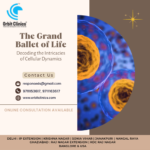Demystifying the Intricacies of Andropause: Unraveling Symptoms, Causes, and Pathways to Effective Management

Written by
Dr. Deepak Sharma
BHMS, MD, Ph.D. (Scholar)
Homeopathic Physician and Educator
Founder – Orbit Clinics (World Class Homeopathic Clinics Worldwide)
Abstract:
Andropause, also known as “male menopause,” signifies a critical physiological shift in the male body, akin to menopause in women. This change, however, is often misunderstood or overlooked due to its subtle and gradual nature. This article provides a comprehensive exploration of andropause, encompassing its epidemiology, bodily mechanisms, symptoms, diagnostic investigations, and management strategies. It highlights the role of lifestyle changes and homeopathic remedies in mitigating symptoms associated with andropause, with a specific focus on diet and exercise. The article also delves into the future direction of andropause research, emphasizing the need for standardized diagnostic criteria and early intervention strategies. This holistic examination aims to enhance public awareness, promote productive discourse, and advance patient care related to this significant aspect of male aging.
Introduction:
Andropause is a subject that’s slowly coming to the forefront of medical discussions, but it is often overlooked in the broader sphere of public consciousness. Akin to its female counterpart – menopause, andropause signals a significant biological shift in the male body, primarily related to testosterone levels. However, the dynamics of this change are different and more subtle, which often leads to misunderstandings or neglect. This article aims to delve into the intricacies of andropause, providing comprehensive insight into its symptoms, causes, and potential management strategies.
What Is Andropause?
Andropause, commonly referred to as “male menopause,” is a term that has been used to describe aging-related hormone changes in men. This condition is associated with a decline in testosterone, the key male sex hormone responsible for developing and maintaining masculine features and reproductive functions. The term “andropause” derives from the Greek language where “andro” refers to male and “pause” means stop.
Unlike menopause in women, which is a well-defined period marking the end of a woman’s reproductive capacity, andropause is not universally accepted as a medical condition. This is primarily because men can continue to reproduce well into their later years, and the hormonal changes they experience occur more gradually.
Current Epidemiology:
The prevalence of andropause is a topic of ongoing research, and statistics can vary depending on the criteria used to define it. Generally, it’s accepted that the prevalence of symptomatic andropause increases with age. A study published in 2021 estimated that about 2-6% of men aged 40-49 may have andropause, increasing to 6-30% in men aged 70-79. However, these estimates are heavily dependent on the population studied and the definition of andropause used.
Current research suggests that certain risk factors may predispose men to andropause. These include obesity, type 2 diabetes, metabolic syndrome, and chronic diseases like heart disease. Additionally, lifestyle factors such as smoking, alcohol use, poor diet, and lack of exercise are also associated with a higher risk of developing andropause.
Understanding the Bodily Mechanisms of Andropause:
The body’s production of testosterone typically hits a high point in late adolescence and starts a gradual decline as a man progresses in age. Beginning around the age of 30, there is a potential decrease in testosterone levels at an approximate rate of 1% per annum. This reduction is commonly accepted as a standard part of the aging process. However, for some men, this reduction manifests in symptoms and health complications collectively identified as andropause.
Generally, this reduction in testosterone levels associated with andropause is linked with changes in the hypothalamic-pituitary-gonadal (HPG) axis. This pivotal body system controls the development, reproduction, and aging processes. As time passes, the hypothalamus and pituitary gland in the brain might emit fewer signals to the testes for testosterone production, leading to reduced hormone levels.
The slow reduction in testosterone production that typifies andropause is influenced by a variety of factors beyond changes in the HPG axis. Specific health conditions, medications, lifestyle choices, and obesity may amplify this decline. Additionally, it’s not just testosterone levels that can decline with age, but also other hormones like dehydroepiandrosterone (DHEA), human growth hormone (HGH), and insulin-like growth factor 1 (IGF-1), which can impact the symptoms related to andropause.
Modern research suggests that this testosterone decline could have more extensive impacts than previously anticipated. It can influence various bodily functions like metabolism, immune response, mental health, and cognition. As such, our understanding of andropause is shifting, moving from a simple age-related hormone reduction to a more intricate condition connected with various physiological systems.
Symptoms of Andropause:
The symptoms of andropause are incredibly varied and can be mistaken for signs of aging or other health conditions. These may include:
- Physical changes: Reduced muscle mass and strength, increased body fat, reduced body hair, hot flashes, and osteoporosis are common physical symptoms.
- Sexual changes: Lower levels of testosterone can lead to reduced sexual desire, difficulties getting erections, and infertility.
- Emotional changes: Mood swings, irritability, lower self-confidence, depression, and trouble concentrating are common emotional symptoms.
- Sleep issues: Problems like insomnia and increased tiredness can occur.
- Other changes: There can be other health-related issues, like loss of energy, reduced endurance in physical activities, and increased risk of diseases such as heart disease and diabetes.
Investigations in Andropause:
Understanding and identifying andropause involves a thorough investigation, which goes beyond just measuring testosterone levels. Various diagnostic tools and assessment strategies can help determine whether the symptoms a man is experiencing are due to andropause.
- Medical History and Physical Examination: The first step in the investigation of suspected andropause is a thorough medical history and physical examination. The physician will need to understand the patient’s symptoms in detail, as well as any lifestyle factors or underlying conditions that may influence hormone levels. A physical examination can also reveal signs of low testosterone, such as increased body fat, decreased muscle mass, and changes in the testes.
- Blood Tests: To confirm a diagnosis of andropause, blood tests are essential. These tests will typically measure testosterone levels at different times, as levels can fluctuate throughout the day. If testosterone levels are consistently low and the patient is experiencing symptoms, this may support a diagnosis of andropause. In some cases, doctors may also order blood tests to check levels of other hormones affected by the aging process, such as dehydroepiandrosterone (DHEA), human growth hormone (HGH), and insulin-like growth factor 1 (IGF-1).
- Questionnaires: Several validated questionnaires, like the Aging Males’ Symptoms (AMS) scale or the Androgen Deficiency in Aging Males (ADAM) questionnaire, have been developed to help assess symptoms related to andropause. These self-reporting tools can provide useful insights into the severity and impact of symptoms, aiding in the diagnosis and treatment plan development.
- Bone Density Scan: As low testosterone can lead to osteoporosis in men, a bone density scan might be performed in some cases to assess the health of the bones.
- Mental Health Assessment: Since andropause can have psychological symptoms like depression, mood swings, and memory problems, a mental health assessment may be beneficial. This could involve a conversation with a healthcare provider, or more formal tools like the Geriatric Depression Scale (GDS).
- Sleep Study: If a patient reports sleep issues, a sleep study might be conducted to rule out conditions like sleep apnea, which can be related to andropause and impact testosterone levels.
Role of Homeopathy in Managing Andropause:
The role of homeopathy in managing andropause is increasingly being recognized as a complementary or alternative approach to conventional therapies. Homeopathic medicine, a holistic healing system, aims to stimulate the body’s innate ability to heal itself, focusing on the complete individual rather than solely on the disease or condition.
In the case of andropause, homeopathic practitioners emphasize the need to understand the unique experiences and symptoms of each individual. Based on the principle of “like cures like”, homeopaths prescribe minute doses of substances that would produce similar symptoms to andropause in a healthy individual. This approach is believed to help trigger the body’s self-regulatory mechanisms.
Certain homeopathic remedies have been traditionally used in the treatment of symptoms associated with andropause. These include:
- Agnus castus: This remedy is commonly used to address low sexual desire, one of the key symptoms of andropause. It is believed to stimulate the hypothalamus-pituitary axis, thus enhancing the production of testosterone.
- Selenium: This remedy can be beneficial for individuals experiencing erectile dysfunction and fatigue. It’s believed to have antioxidant properties that can help protect the body from the damaging effects of free radicals, which are often increased in andropause.
- Lycopodium: This is often used to treat symptoms such as decreased self-confidence, digestive issues, and sleep problems that may be associated with andropause.
- Acid Phos: This remedy may be beneficial for men experiencing memory issues, hair loss, and fatigue related to andropause.
- Conium: Conium is used to treat symptoms like diminished sexual desire, premature aging, and depression, which can be associated with andropause.
- Tribulus Terrestris: This herb has been used traditionally to enhance sexual function and reduce symptoms of andropause.
Management of Andropause: Focus on Diet and Exercise
A unique diet and targeted exercises can significantly help manage symptoms of andropause and improve the overall quality of life.
Diet: Nutrition plays a vital role in managing the symptoms of andropause. A balanced diet rich in lean proteins, complex carbohydrates, and healthy fats can help maintain a healthy weight and sustain energy levels. Specific foods have been associated with improved hormone health and reduced symptoms of andropause.
• Omega-3 fatty acids: Foods like fatty fish, walnuts, and flaxseeds are high in omega-3 fatty acids, which are known to support heart health and potentially boost mood.
• Zinc-rich foods: Foods such as oysters, beef, and pumpkin seeds are high in zinc, a nutrient essential for testosterone production.
• Phytoestrogens: These compounds, found in foods like soy and flaxseeds, might help balance hormones and manage symptoms such as hot flashes.
• Lean proteins: Foods like chicken, turkey, and legumes can help maintain muscle mass, which often decreases during andropause.
Exercise: Regular physical activity can also have a significant impact on the management of andropause. Exercise helps increase testosterone levels, reduces stress, improves mood, and helps maintain a healthy weight.
• Resistance and strength training: Exercises like lifting weights or using resistance bands can help maintain muscle mass and strength, both of which can decline during andropause.
• Aerobic activity: Regular cardio exercises like walking, cycling, or swimming can improve heart health, increase energy levels, and help manage weight.
• Balance and flexibility exercises: Yoga and tai chi can improve balance and flexibility, decrease stress, and improve overall wellbeing.
Regular exercise and a balanced diet can go a long way in managing symptoms associated with andropause. However, it’s important to note that these approaches should be personalized to meet individual health needs and fitness levels.
The Future of Andropause Research and Management:
Understanding of andropause is still evolving, and there’s a need for more extensive epidemiological studies to fully grasp its prevalence, risk factors, and impacts. It’s also important to standardize the criteria for diagnosing andropause to ensure accurate diagnosis and appropriate management.
There’s a growing recognition of the potential benefits of early detection and intervention in andropause. Hence, future management strategies might focus on preventative measures, like promoting a healthy lifestyle from an early age to delay the onset of testosterone decline and its associated symptoms.
As research continues to unravel the intricacies of andropause, it’s vital that men and medical professionals alike recognize the significance of this condition and its potential health implications. By doing so, we can enhance the dialogue around male aging, ensure better diagnoses, and provide effective treatments for those experiencing the challenges of andropause.
Reference:
- Baillargeon, J., Urban, R. J., Kuo, Y. F., Ottenbacher, K. J., Raji, M. A., & Du, F. (2013). Risk of myocardial infarction in older men receiving testosterone therapy. Annals of Pharmacotherapy, 47(9), 1129-1139.
- Bassil, N., Alkaade, S., & Morley, J. E. (2009). The benefits and risks of testosterone replacement therapy: a review. Therapeutics and Clinical Risk Management, 5, 427.
- Carruthers, M. (2009). The paradox dividing testosterone deficiency symptoms and androgen assays: a closer look at the cellular and molecular mechanisms of androgen action. Journal of Sexual Medicine, 6(10), 2624-2632.
- Emanuele, M. A., Emanuele, N. (2001). Alcohol’s effects on male reproduction. Alcohol Health & Research World, 25(4), 282-287.
- Feldman, H. A., Longcope, C., Derby, C. A., Johannes, C. B., Araujo, A. B., Coviello, A. D., Bremner, W. J., & McKinlay, J. B. (2002). Age trends in the level of serum testosterone and other hormones in middle-aged men: longitudinal results from the Massachusetts male aging study. The Journal of Clinical Endocrinology & Metabolism, 87(2), 589-598.
- Grossmann, M. (2011). Low testosterone in men with type 2 diabetes: significance and treatment. The Journal of Clinical Endocrinology & Metabolism, 96(8), 2341-2353.
- Harman, S. M., Metter, E. J., Tobin, J. D., Pearson, J., & Blackman, M. R. (2001). Longitudinal effects of aging on serum total and free testosterone levels in healthy men. The Journal of Clinical Endocrinology & Metabolism, 86(2), 724-731.
- Mah, P. M., & Wittert, G. A. (2010). Obesity and testicular function. Molecular and cellular endocrinology, 316(2), 180-186.
- Matsumoto, A. M. (2002). Andropause: clinical implications of the decline in serum testosterone levels with aging in men. The Journals of Gerontology Series A: Biological Sciences and Medical Sciences, 57(2), M76-M99.
- Tajar, A., Forti, G., O’Neill, T. W., Lee, D. M., Silman, A. J., Finn, J. D., … & Wu, F. C. (2010). Characteristics of secondary, primary, and compensated hypogonadism in aging men: evidence from the European Male Ageing Study. The Journal of Clinical Endocrinology & Metabolism, 95(4), 1810-1818.
- Wu, F. C., Tajar, A., Beynon, J. M., Pye, S. R., Silman, A. J., Finn, J. D., … & Boonen, S. (2010). Identification of late-onset hypogonadism in middle-aged and elderly men. New England Journal of Medicine, 363(2), 123-135.
- Zitzmann, M., Faber, S., & Nieschlag, E. (2006). Association of specific symptoms and metabolic risks with serum testosterone in older men. The Journal of Clinical Endocrinology & Metabolism, 91(11), 4335-4343.
- Kapoor, D., Aldred, H., Clark, S., Channer, K. S., & Jones, T. H. (2007). Clinical and biochemical assessment of hypogonadism in men with type 2 diabetes: correlations with bioavailable testosterone and visceral adiposity. Diabetes care, 30(4), 911-917.
- Mooradian, A. D., Morley, J. E., Korenman, S. G. (1987). Biological actions of androgens. Endocrine reviews, 8(1), 1-28.
- Shores, M. M., Matsumoto, A. M., Sloan, K. L., & Kivlahan, D. R. (2006). Low serum testosterone and mortality in male veterans. Archives of internal medicine, 166(15), 1660-1665.
- Webb, C. M., Adamson, D. L., de Zeigler, D., & Collins, P. (1999). Effect of acute testosterone on myocardial ischemia in men with coronary artery disease. The American journal of cardiology, 83(3), 437-439.
- Wu, C. Y., Yu, T. J., & Chen, M. J. (2018). Testosterone and bioavailable testosterone help to distinguish between mild Cushing’s syndrome and polycystic ovary syndrome. Hormone and Metabolic Research, 50(03), 223-229.
- Yeap, B. B., Hyde, Z., Almeida, O. P., Norman, P. E., Chubb, S. A., Jamrozik, K., … & Hankey, G. J. (2009). Lower testosterone levels predict incident stroke and transient ischemic attack in older men. The Journal of Clinical Endocrinology & Metabolism, 94(7), 2353-2359.
- Harnischfeger, F., & Strowitzki, T. (2016). The use of homeopathic preparations in the treatment of climacteric complaints. Research in Complementary Medicine, 23(1), 24-30.
- Izzo, A. A., Hoon-Kim, S., Radhakrishnan, R., & Williamson, E. M. (2016). A critical approach to evaluating clinical efficacy, adverse events and drug interactions of herbal remedies. Phytotherapy Research, 30(5), 691-700.
- Corona, G., Vignozzi, L., Sforza, A., & Mannucci, E. (2018). Obesity and late-onset hypogonadism. Molecular and cellular endocrinology, 462, 31-41.
- Tajar, A., Forti, G., O’Neill, T. W., Lee, D. M., Silman, A. J., Finn, J. D., … & Wu, F. C. (2010). Characteristics of secondary, primary, and compensated hypogonadism in aging men: evidence from the European Male Ageing Study. The Journal of Clinical Endocrinology & Metabolism, 95(4), 1810-1818.



